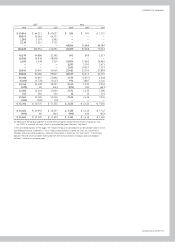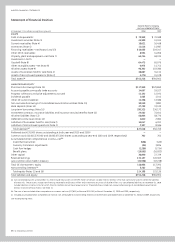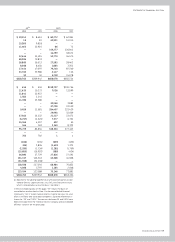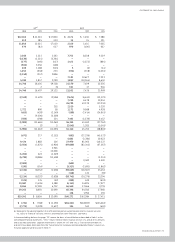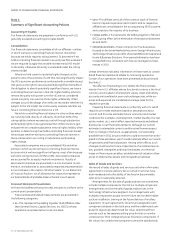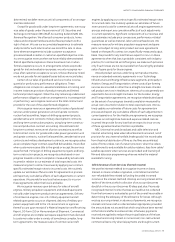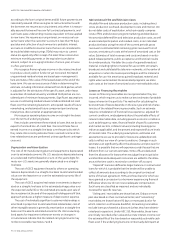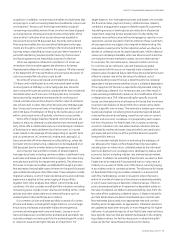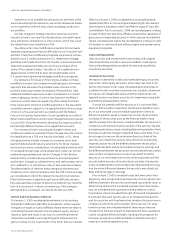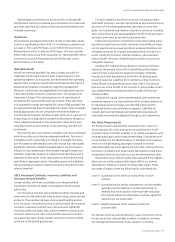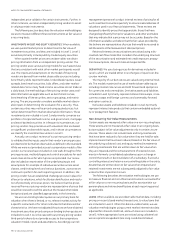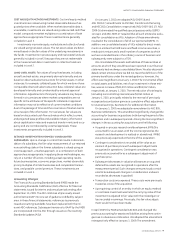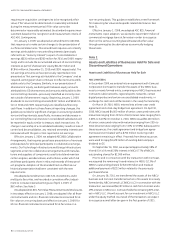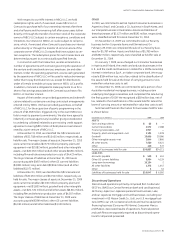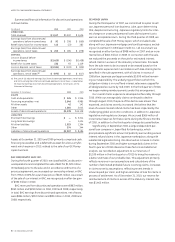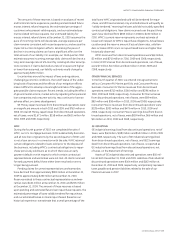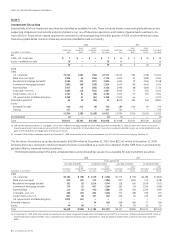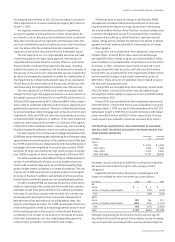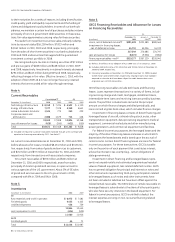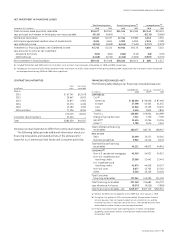GE 2010 Annual Report Download - page 79
Download and view the complete annual report
Please find page 79 of the 2010 GE annual report below. You can navigate through the pages in the report by either clicking on the pages listed below, or by using the keyword search tool below to find specific information within the annual report. GE 2010 ANNUAL REPORT 77
For short-duration insurance contracts, including accident
and health insurance, we report premiums as earned income over
the terms of the related agreements, generally on a pro-rata
basis. For traditional long-duration insurance contracts including
term, whole life and annuities payable for the life of the annuitant,
we report premiums as earned income when due.
Premiums received on investment contracts (including annui-
ties without significant mortality risk) and universal life contracts
are not reported as revenues but rather as deposit liabilities. We
recognize revenues for charges and assessments on these con-
tracts, mostly for mortality, contract initiation, administration
and surrender. Amounts credited to policyholder accounts are
charged to expense.
Liabilities for traditional long-duration insurance contracts
represent the present value of such benefits less the present
value of future net premiums based on mortality, morbidity,
interest and other assumptions at the time the policies were
issued or acquired. Liabilities for investment contracts and uni-
versal life policies equal the account value, that is, the amount
that accrues to the benefit of the contract or policyholder includ-
ing credited interest and assessments through the financial
statement date.
Liabilities for unpaid claims and estimated claim settlement
expenses represent our best estimate of the ultimate obligations
for reported and incurred-but-not-reported claims and the
related estimated claim settlement expenses. Liabilities for
unpaid claims and estimated claim settlement expenses are
continually reviewed and adjusted through current operations.
Fair Value Measurements
For financial assets and liabilities measured at fair value on a
recurring basis, fair value is the price we would receive to sell
an asset or pay to transfer a liability in an orderly transaction with
a market participant at the measurement date. In the absence of
active markets for the identical assets or liabilities, such measure-
ments involve developing assumptions based on market
observable data and, in the absence of such data, internal informa-
tion that is consistent with what market participants would use in
a hypothetical transaction that occurs at the measurement date.
Observable inputs reflect market data obtained from indepen-
dent sources, while unobservable inputs reflect our market
assumptions. Preference is given to observable inputs. These
two types of inputs create the following fair value hierarchy:
Level 1— Quoted prices for identical instruments in active
markets.
Level 2— Quoted prices for similar instruments in active markets;
quoted prices for identical or similar instruments in
markets that are not active; and model-derived valua-
tions whose inputs are observable or whose significant
value drivers are observable.
Level 3— Significant inputs to the valuation model are
unobservable.
We maintain policies and procedures to value instruments using
the best and most relevant data available. In addition, we have
risk management teams that review valuation, including
Realized gains and losses are accounted for on the specific
identification method. Unrealized gains and losses on investment
securities classified as trading and certain retained interests are
included in earnings.
Inventories
All inventories are stated at the lower of cost or realizable values.
Cost for a significant portion of GE U.S. inventories is determined
on a last-in, first-out (LIFO) basis. Cost of other GE inventories is
determined on a first-in, first-out (FIFO) basis. LIFO was used for
39% of GE inventories at both December 31, 2010 and 2009. GECS
inventories consist of finished products held for sale; cost is
determined on a FIFO basis.
Intangible Assets
We do not amortize goodwill, but test it at least annually for
impairment at the reporting unit level. A reporting unit is the
operating segment, or a business one level below that operating
segment (the component level) if discrete financial information is
prepared and regularly reviewed by segment management.
However, components are aggregated as a single reporting unit
if they have similar economic characteristics. We recognize an
impairment charge if the carrying amount of a reporting unit
exceeds its fair value and the carrying amount of the reporting
unit’s goodwill exceeds the implied fair value of that goodwill. We
use discounted cash flows to establish fair values. When available
and as appropriate, we use comparative market multiples to
corroborate discounted cash flow results. When all or a portion of
a reporting unit is disposed of, goodwill is allocated to the gain or
loss on disposition based on the relative fair values of the busi-
ness disposed of and the portion of the reporting unit that will
be retained.
We amortize the cost of other intangibles over their estimated
useful lives unless such lives are deemed indefinite. The cost of
intangible assets is generally amortized on a straight-line basis
over the asset’s estimated economic life, except that individually
significant customer-related intangible assets are amortized in
relation to total related sales. Amortizable intangible assets are
tested for impairment based on undiscounted cash flows and, if
impaired, written down to fair value based on either discounted
cash flows or appraised values. Intangible assets with indefinite
lives are tested annually for impairment and written down to fair
value as required.
GECS Investment Contracts, Insurance Liabilities and
Insurance Annuity Benefits
Certain entities, which we consolidate, provide guaranteed
investment contracts to states, municipalities and municipal
authorities.
Our insurance activities also include providing insurance and
reinsurance for life and health risks and providing certain annuity
products. Three product groups are provided: traditional insur-
ance contracts, investment contracts and universal life insurance
contracts. Insurance contracts are contracts with significant
mortality and/or morbidity risks, while investment contracts are
contracts without such risks. Universal life insurance contracts
are a particular type of long-duration insurance contract whose
terms are not fixed and guaranteed.


